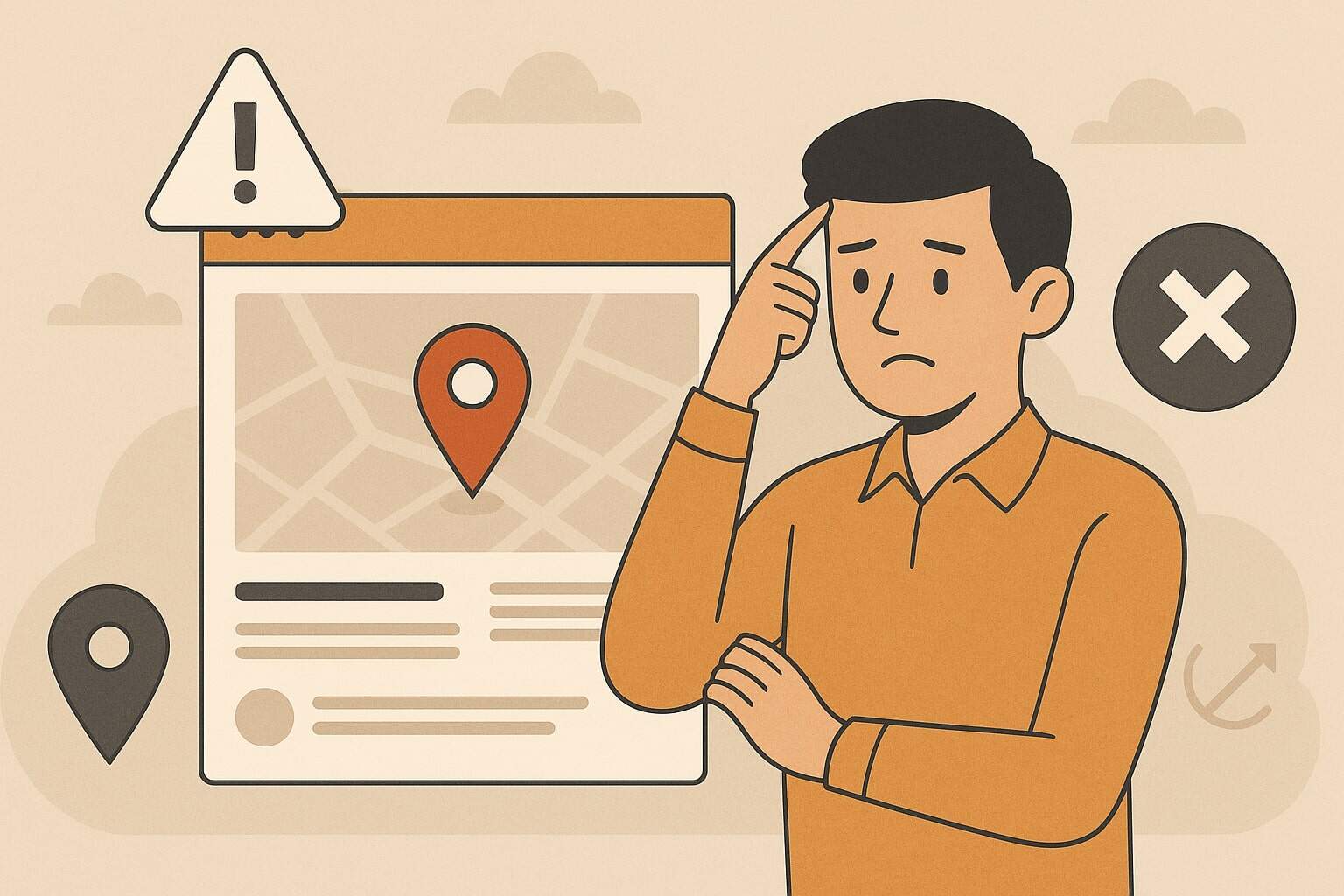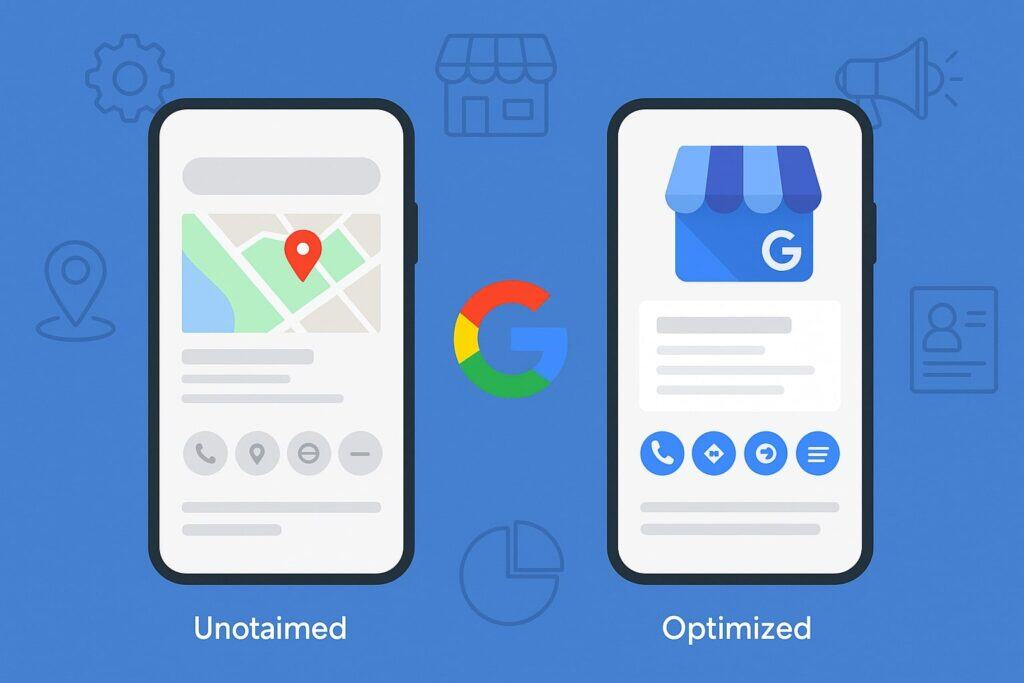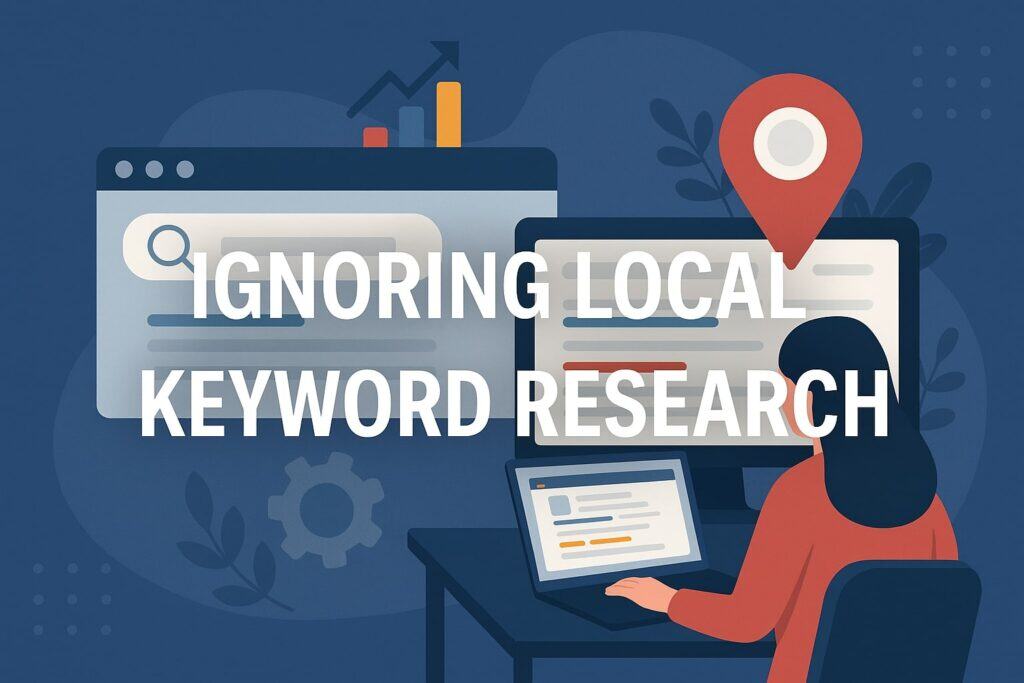
Common Local SEO Mistakes Small Businesses Make
Local SEO has become one of the most powerful tools for small businesses that want to attract nearby customers and compete with larger brands. With the majority of consumers turning to Google and other search engines to find “near me” services, local visibility is no longer optional—it’s essential.
Yet, many small businesses still struggle to rank well because they unknowingly make critical mistakes in their local SEO strategies. These mistakes can range from poor website optimization to inconsistent business listings, and they often lead to missed opportunities, wasted marketing budgets, and reduced customer trust.
In this guide, we’ll dive deep into the most common local SEO mistakes small businesses make, why they matter, and how you can fix them. Each section provides detailed insights, practical solutions, and actionable steps so you can strengthen your online presence and dominate your local market.
Not Claiming and Optimizing Google Business Profile (GBP)

One of the most damaging mistakes small businesses make in local SEO is failing to claim or optimize their Google Business Profile (formerly Google My Business).
GBP is the foundation of local visibility—it’s what powers your business information on Google Maps, the Local Pack, and even knowledge panels. When potential customers search for businesses near them, Google relies heavily on this profile to determine relevance, proximity, and prominence.
Yet, many businesses either don’t claim their profile or leave it incomplete. This means missing out on critical traffic and credibility. For example, a restaurant with no profile might be invisible in “best restaurants near me” searches, while a competitor with a fully optimized profile dominates the results.
Even worse, if a business doesn’t claim its listing, third-party data sources may populate it with inaccurate information—wrong hours, outdated phone numbers, or even closed status—which damages trust.
Optimization also matters. Simply claiming the profile isn’t enough; you need to complete every section with accurate, keyword-rich details. Many small businesses forget to:
- Upload high-quality photos of their storefront, team, and products.
- Add a compelling business description that integrates local keywords.
- Keep hours of operation updated, including holidays.
- Use categories and attributes that align with their services.
- Post updates, offers, or events regularly.
Ignoring reviews is another costly mistake. Consumers trust reviews almost as much as personal recommendations, and Google factors them into rankings.
Businesses that don’t actively request, respond to, or manage reviews risk appearing inactive or unreliable. Worse, negative reviews left unanswered create a perception of poor customer service.
To fix this, small businesses should prioritize claiming their GBP as step one in any local SEO plan. Then, they should fill out every available field, upload fresh photos monthly, encourage satisfied customers to leave reviews, and respond to all feedback professionally. Consistency and activity signal to Google that the business is trustworthy, which boosts rankings.
In short, failing to claim and optimize your Google Business Profile is like refusing to hang a sign outside your store—it makes it nearly impossible for customers to find you.
Inconsistent NAP (Name, Address, Phone Number) Citations

NAP consistency is another crucial but often overlooked element of local SEO. Your business’s Name, Address, and Phone number must be identical across every online platform—whether that’s your website, business directories, social media pages, or mapping services.
Inconsistent NAP data confuses search engines and customers alike, leading to lower rankings and lost trust.
For example, if your business is listed as “ABC Plumbing Co.” on Yelp, “ABC Plumbing Company” on Google, and “ABC Plumbing” on Facebook—with different phone numbers or slightly varied addresses—Google struggles to confirm whether these listings refer to the same business. As a result, your local authority is diluted, and you may not show up in the Local Pack or map results.
From a customer perspective, inconsistent information is equally damaging. Imagine someone trying to call your business only to find two different numbers online.
They might assume you’re unreliable and move on to a competitor. Similarly, if hours differ across sites, a customer could show up to a closed storefront and leave a negative review.
Common mistakes include:
- Not updating citations after moving locations.
- Using call tracking numbers without proper setup.
- Having multiple variations of the business name.
- Allowing outdated listings on niche directories.
The fix requires a citation audit. Start by identifying where your business is listed online—Google, Yelp, Bing, Facebook, Yellow Pages, niche directories, etc.—and check for consistency.
Then, correct discrepancies manually or use citation management tools to streamline the process. Once your NAP is consistent, maintain it by updating every platform whenever changes occur.
Google rewards businesses with clean, consistent data by boosting visibility. More importantly, customers trust businesses with accurate, reliable information. Think of NAP consistency as the digital equivalent of keeping your store signage clear, accurate, and professional.
Ignoring Local Keyword Research

Another common local SEO mistake is ignoring local keyword research. Many small businesses either target generic keywords or copy their competitors without considering what their actual audience is searching for. This leads to wasted effort and poor rankings because search intent isn’t aligned with the content.
For example, a bakery in Austin, TX might target “best bakery” as a keyword, but that’s too broad and competitive. Instead, terms like “best bakery in Austin,” “wedding cakes Austin,” or “gluten-free bakery near me” are far more valuable because they capture local intent. Without proper keyword research, the bakery misses out on high-converting local searches.
Some businesses also focus too much on vanity keywords—those with high search volume but little relevance—rather than long-tail local keywords that bring in ready-to-buy customers.
Others ignore Google’s autocomplete suggestions, “People also ask” sections, and local modifiers like city names, zip codes, or neighborhood names.
The fix is straightforward but requires strategy:
- Use keyword research tools (Google Keyword Planner, Ahrefs, SEMrush) to find local search terms.
- Incorporate geo-modifiers (city, county, neighborhood) into your keywords.
- Analyze competitors’ websites and GBP listings for inspiration.
- Build content around local intent, such as blog posts on “Top 5 coffee shops in [City]” or “How to choose a wedding photographer in [City].”
By optimizing for local keywords, small businesses can rank for highly relevant searches, attract nearby customers, and reduce competition with broader national terms.
Ignoring local keyword research is like casting a fishing net in the wrong pond—you’ll work hard but catch nothing.
Weak or Non-Localized Content
Content is king in SEO, but for local SEO, it must be localized. Many small businesses publish generic blogs or service pages without tailoring them to their community. This weakens their ability to rank for local queries and build trust with nearby audiences.
For instance, a law firm might publish articles like “Top 10 Legal Tips for Small Businesses,” which can attract traffic but not necessarily local clients. Instead, content like “How Austin Business Owners Can Navigate Local Employment Laws” would resonate more with their target audience.
Common mistakes include:
- Publishing thin or duplicate content.
- Not creating location-specific service pages.
- Ignoring local events, news, or community topics.
- Using stock photos instead of local imagery.
To fix this, businesses should focus on creating localized content such as:
- Location-specific service pages (e.g., “Roof Repair in Dallas, TX”).
- Blog posts about local events or customer success stories.
- Case studies featuring local clients.
- Community guides, resources, or neighborhood highlights.
Localized content not only helps rankings but also builds stronger connections with customers. People want to work with businesses that understand their community, and Google rewards content that demonstrates local relevance.
Slow or Poorly Optimized Websites
Website performance plays a critical role in local SEO. A slow, poorly optimized website frustrates visitors, increases bounce rates, and reduces conversions. More importantly, Google considers site speed and mobile-friendliness as ranking factors, meaning a sluggish site can directly hurt your visibility.
Many small businesses make the mistake of investing in flashy designs without considering functionality. Large, uncompressed images, unnecessary plugins, or outdated hosting slow down websites significantly.
In a local context, where users are often searching on mobile devices, speed is even more critical.
Common issues include:
- Websites not being mobile-friendly.
- Slow page load times due to unoptimized images.
- Missing SSL certificates (HTTPS).
- Poor site architecture and navigation.
To fix this, businesses should:
- Compress images and use next-gen formats.
- Invest in reliable hosting.
- Implement caching and content delivery networks (CDNs).
- Use responsive design for mobile compatibility.
- Conduct regular audits using tools like Google PageSpeed Insights.
A fast, user-friendly website signals professionalism and credibility. It also ensures that when local customers find you, they don’t leave out of frustration.
Failing to Build Local Backlinks
Backlinks are a cornerstone of SEO, and local backlinks are especially valuable for small businesses. Yet, many ignore link building altogether or rely solely on generic links. Local backlinks—those from locally relevant sites, organizations, or media—signal to Google that your business is trusted within its community.
Mistakes include:
- Not partnering with local organizations for links.
- Ignoring sponsorships or charity opportunities.
- Overlooking local news outlets or bloggers.
- Relying on low-quality, irrelevant backlinks.
To fix this, small businesses should actively pursue local link-building strategies:
- Partner with local chambers of commerce.
- Sponsor community events or sports teams.
- Collaborate with local bloggers or influencers.
- Submit press releases to local media.
- Get listed in local business directories.
Local backlinks not only improve SEO but also drive direct referral traffic from relevant sources. Building these connections strengthens both online and offline community presence.
FAQs
Q.1: Why is local SEO important for small businesses?
Answer: Local SEO ensures that your business shows up when nearby customers search for products or services you offer. Unlike traditional SEO, which focuses on national or global visibility, local SEO prioritizes geographic relevance.
For small businesses, this is critical because most customers search for solutions near them. A strong local SEO strategy helps you appear in Google’s Local Pack, Maps, and localized searches, which are high-converting traffic sources.
Without local SEO, small businesses risk being invisible to their most valuable audience—local buyers. It’s not just about ranking higher; it’s about being found by the right people at the right time.
Q.2: What happens if my business information is inconsistent online?
Answer: Inconsistent business information (NAP citations) creates confusion for both Google and potential customers.
From a search engine perspective, inconsistencies make it difficult to verify your business’s legitimacy, which lowers your local authority and hurts rankings. From a customer perspective, conflicting information leads to frustration, mistrust, and even lost sales.
For example, if your Google listing says you close at 7 PM but Yelp says 6 PM, customers might arrive at a locked door. Situations like this not only damage your reputation but also invite negative reviews. Keeping your information consistent across all platforms is essential for credibility and visibility.
Conclusion
Local SEO is a powerful tool that allows small businesses to compete effectively in today’s digital-first marketplace.
However, many fall into common traps such as ignoring Google Business Profile optimization, neglecting NAP consistency, overlooking local keywords, failing to localize content, running slow websites, or skipping local backlinks. Each of these mistakes directly impacts visibility, trust, and customer engagement.
By identifying and correcting these errors, small businesses can dramatically improve their online presence and attract more local customers. Local SEO isn’t just about ranking—it’s about connecting with your community, building trust, and ensuring that when people search for what you offer, they find you first.